Description
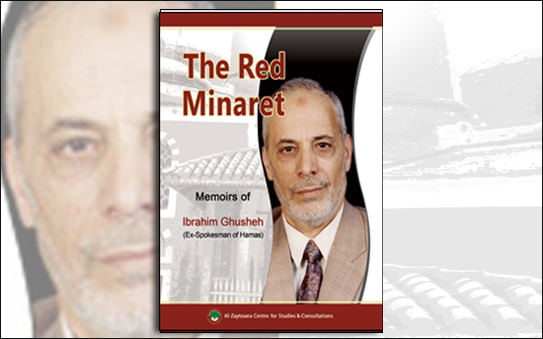 Publication Info
Publication Info
Title: Al-Mi’dhanah al-Hamra’: Sirah Dhatiyah (The Red Minaret: Memoirs of Ibrahim Ghusheh)
Author: Ibrahim Ghusheh
Published in: 2008 (1st edition)
Physical details: 276 pages, 17*24 cm, hardcover
Book Review By Dr. Daud Abdullah
Book Review By Assoc. Prof. Dr. Ishtiaq Hossain
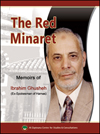 This book is the autobiography of Mr. Ibrahim Ghusheh, the former Hamas speaker. It presents a life testimony of about 50 years of experience among the Palestinian Muslim Brothers. It highlights the work of Hamas outside Palestine. Additionally, the book provides the reader with very rich material and information revealed for the first time, by a man who was in the inner circle of the political decision making of Hamas, especially during the first 12 years of its establishment, i.e., 1988-2000.
This book is the autobiography of Mr. Ibrahim Ghusheh, the former Hamas speaker. It presents a life testimony of about 50 years of experience among the Palestinian Muslim Brothers. It highlights the work of Hamas outside Palestine. Additionally, the book provides the reader with very rich material and information revealed for the first time, by a man who was in the inner circle of the political decision making of Hamas, especially during the first 12 years of its establishment, i.e., 1988-2000.
The significance of the book stems from the detailed explanation of the author for many controversial points about the period that preceded the second Intifadah..
Presented by Prof. Dr. Mohsen Mohammad Saleh, General Manager of al-Zaytouna Centre for Studies and Consultations.
For the first time, one of Hamas prominent leaders in Diaspora publishes his autobiography. Indeed, it is a testament to the era, and to the experience of the Muslim Brothers Movement (MB) and Hamas described by an insider.
When Ibrahim Ghusheh himself talks about the experience of the Muslim Brothers in Jordan and Palestine and about Hamas’s experience, doubtless he will attract all specialists and researchers, whether in the Palestinian issue or the Islamic Movement.
These memoirs are rich with information published for the first time by a man who has lived in the Jordanian and Palestinian MB environment for over 50 years, and acted as Hamas’s official spokesperson in 1991–1999. They also reflect the life and vision of one of the most prominent political decision makers, especially in the first 12 years of the movement’s inception.
In fact, the life and experience of the author make the book an indispensable source of information for researchers and scholars of the Palestinian issue, especially the Islamic Palestinian trend. The choice of the title is meant to take the reader to the atmosphere of Jerusalem where the author grew up to see the red minaret of a mosque near his house.
The language Ghusheh uses in this 13-chapter book is simple and explicit, where the social, familial, and humanitarian side intermingles with the ideological, political and resistance side, away from artificiality, and from the ego, which is heavily found in memoirs. Ultimately, the reader is presented with a person who firmly believes in his ideology, loyal to and ready to sacrifice for it.
Birth, Upbringing and al-Nakbah (Catastrophe)
Ibrahim Ghusheh was born in 1936, a month following the first stage of the Palestinian Revolt. In the first chapter, Ghusheh talks about his family and childhood memories, while describing Jerusalem and al-Aqsa Mosque before 1948. In the second chapter, he describes his memories of al-Nakbah of 1948, al-Qastal Battle, the killing of ‘Abdul Qadir al-Husseini, and his family’s need to move to Jericho before going back to Jerusalem once again.
Ghusheh also talks about the growing political interest among the youths, and the attempts to identify the best way for liberating Palestine. He mentions his attraction in Grade Six to the lessons presented by Sheikh Taqiyuddin al-Nabahani in the Muslim Brothers Division, and then his enrollment in the MB in Grade Seven, following the footsteps of his elder brother Musa, and his maternal cousin, Mahmud al-‘Arian.
He then talks about the beginnings of Hizb ut-Tahrir (Liberation Party) in Jerusalem, and how al-Nabahani could attract most MB scholars and intellectuals, while only a limited number were left out, like Zakariyya Qneibi and Ibrahim Abu ‘Arafah. He also describes how the Muslim Brothers regained the lead, benefiting from the growing strength of the MB in Egypt and east Jordan, and from the return of students who were studying in Egypt. He also mentions how the likes of Shehadeh al-Ansari, Salem ‘Ali Salem and Muhammad Nimr Wehbeh participated in the re-organization and enhancement of MB work in Jerusalem. Ghusheh sheds light as well on the activities of the Muslim Brothers in Jerusalem until 1954.
In the third chapter, Ghusheh talks about the rest of the 50s, especially his study of engineering in Egypt, and about underground work of the Palestinian and Jordanian Muslim Brothers due to the difficult security conditions during Nasser’s rule. He mentions the coordination between the Brothers coming from Jordan and those hailing from the Gaza Strip (GS).
Ghusheh casts light on the Palestinian League where he assures that the student list supported by the MB would always win the elections. The Union was first headed by Yasir ‘Arafat who was close to the Muslim Brothers, then Salah Khalaf (Abu Iyad) who was a member of the MB. Yet, the MB student activity declined in the late 50s because of the security pressure they had to face.
As for the Brothers and their relation with the emergence of Fatah movement, Ghusheh draws the reader’s attention to the fact that Fatah’s early pioneers were MB members such as Khalil al-Wazir (Abu Jihad). He points out to other names including ‘Abdul Fattah al-Hammoud, Riyad al-Za‘nun and Muhammad Yusuf al-Najjar, who became Fatah leaders. Ghusheh illustrates the separation and differentiation between those who established Fatah and the Muslim Brothers, while presenting an assessment of Nasser’s experience.
Kuwait and Jordan
Ghusheh then talks about his work experience in the Kuwait Municipality in 1962–1966 and the establishment of the Palestine Liberation Organization (PLO) and the position of Fatah and the Brothers towards it. He talks about the first the General Supervisor of the Palestinian Muslim Brothers, Hani Bsiso, who used to work as a teacher in Iraq, and who was summoned by the Brothers to lead the Palestinian organization in 1963, where he settled in Egypt. Bsiso was then detained, along with Sayyid Qutb, in the blow dealt to the Muslim Brothers in 1965, and he died in prison.
Ghusheh returned to Jordan and worked in the construction of Khalid Ibn al-Walid Dam. He describes the reaction of the Muslim Brothers there to June 1967 war, the Palestinian resistance work, and the Brothers’ participation in “al-Shuyukh camps,” and the Brothers’ vision of the Jordan Army battles against the resistance organizations in 1970–1971. Ghusheh talks about his participation in building the Kuwait Towers in early 1971, then in the construction of King Talal Dam in the late 1972. He also talks about the work of the MB movement with the Jordan Engineers Association where Ghusheh headed the MB trend in the Association in 1973. He points out to the Brothers’ active participation since the ninth Association council in 1974–1975, until they were able to attract Laith Shubeilat and supported him to become the head of the syndicate in 1982–1983.
The Islamic Work for Palestine in Diaspora
Ghusheh unveils some sides of the Islamic work for Palestine in Diaspora, the most important of which was the formation of Palestine section affiliated with the Muslim Brothers leadership in Jordan, after the Palestinian section in the GS merged with the Jordan Brothers in 1978. He talks about the internal conference, which was held by this section in 1983, in the presence of a number of the Muslim Brothers leaders from the West Bank (WB) and GS, such as ‘Abdul Fattah Dukhan, and from Kuwait, such as Khalid Mish‘al, and others. The meeting was important in the sense that it redefined the track and priorities of the Brothers’ work towards Palestine, and confirmed that there is a new orientation that balances the drive towards an Islamic state in Arab and Islamic countries with popular resistance in Palestine, and a third stage had begun for the Brotherhood to address the Palestinian issue.
Ghusheh also points out to the formation of the Palestine Apparatus, and that it was a decision by the MB International Organization—the apparatus that followed from behind the curtain Hamas’s launching, and its aftermath. Ghusheh talks about his enrollment with Hamas in 1989, at the request of the then General-Guide of the Muslim Brothers Muhammad ‘Abdul Rahman Khalifah. Ghusheh, who was in Kuwait, was entrusted with the mission of forming Hamas’s first political committee.
Hamas’s Relation with Fatah and Jordan
In chapter eight, Ghusheh sheds light on Hamas’s relation with Fatah and the PLO, and displays the dialogue meetings with Fatah where the first one was in Yemen on 10-12/8/1990 and the second in August 1991. He also talks about the Iraqi occupation of Kuwait and his participation as a Hamas representative with the delegations in attempts to bridge the gap and convince the Iraqi leadership of withdrawal.
He also talks about the development of the Brothers’ political role in Jordan after their huge victory in the parliamentary elections in 1989. He sheds light on the arrival of a number of Hamas leaders from Kuwait to Jordan and their relations with the Jordanian government. He points out to his appointment in late 1991 as an official spokesperson for Hamas, the dialogue with the Popular and the Democratic Fronts for the Liberation of Palestine (PFLP and DFLP), and the meeting of the 10 factions, which led to the formation of a front to oppose the Oslo Accords.
In chapter nine, Ghusheh talks about the development of the relation between Hamas and Jordan during 1992–1993, the development of the relation with Fatah and the stance towards Oslo Accords. He reveals the beginnings of Hamas’s external relations in the early 1993 especially concerning returning those displaced to Marj al-Zuhur, where meetings were held in Amman with officials from the embassies of the United States (US), United Kingdom (UK), Italy and Norway. However, at the end of March 1993, the US State Department issued a decision banning any contact with Hamas.
In chapter 10, Ghusheh focuses on the period 1994–1996, and he mentions a number of Hamas activities and positions such as opposing the Oslo Accords, the self-immolation operations, the killing of Yahya ‘Ayyash. He also talks about Hamas’s relation with Fatah, the renewed tension in the relation with Jordan and the conditions that forced Musa Abu Marzuq and ‘Imad al-‘Alami to leave the country in 1995, in addition to electing Mish‘al as the head of the Political Bureau to succeed Abu Marzuq in late 1995.
In chapter 11, Ghusheh displays the development of relations with Jordan, and he casts light on the assassination attempt that targeted Khalid Mish‘al, and its implications, besides the liberation of Sheikh Ahmad Yassin and his foreign tour.
In the following chapter, he exposes the tension in the relations with the Jordan government and Intelligence in 1999. He also talks about the detention of Hamas leaders in Jordan, their life in prison, their political stances, and the expulsion to Qatar of four leaders namely Khalid Mish‘al, Ibrahim Ghusheh, Sami Khatir and ‘Izzat al-Rishq, and the complications that followed.
In chapter 13, Ghusheh talks about the 2000–2001 period, and the development of the relations with Jordan, Damascus, and the Palestinian Authority, in addition to al-Aqsa Intifadah (uprising). He details the story of his return to Jordan in mid June 2000, and his detention in the airport for around two weeks, until the issue was settled according to a new agreement that had him travel to Bangkok then return to Jordan.
Ghusheh never lost his vitality and he continued to follow up on different issues in the following years, while participating in miscellaneous events whenever he could. Yet, his situation in Jordan restricted his movement.
“The Red Minaret” is a book rich with information and stances that any researcher of modern and contemporary history might need in relation to the Palestinian issue. Also, of importance is the index of names, places and institutions at the end of the book, which makes research work easier.




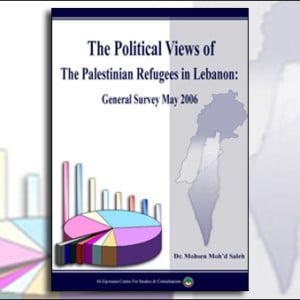
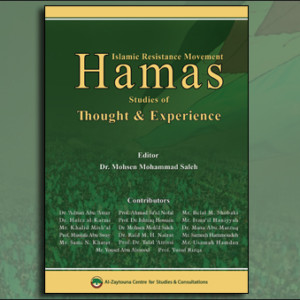
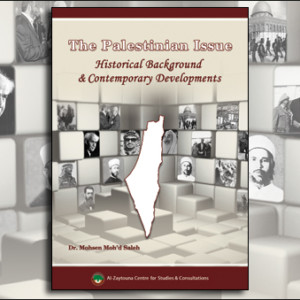
Reviews
There are no reviews yet.